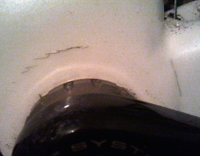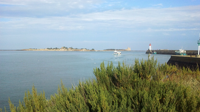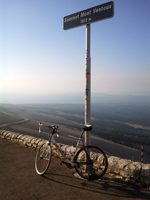La Ronde Picarde 2011
De maandag na La Cyclo’Manche moet mijn fiets voor wat onderhoud naar de fietsenmaker en daar krijg ik verassend nieuws. Er zit een scheur in het frame bij de bracket, eigenlijk twee scheuren. En dat betekent einde verhaal voor het frame. Omdat de fiets nog binnen de garantie valt zal Specialized het frame vervangen. Even schrikken maar gelukkig snel bekomen. Voordeel is een nieuw frame, nadeel is dat de kleuren van de nieuwe lijn me niet echt aanspreken. Kan er nog even over nadenken want La Ronde Picarde staat voor de deur en die kan ik nog wel rijden op m’n huidige frame.




